The Arcevia art route “En plein air” is not just for adults; it is also great to do with children, as it is an exciting journey of discovery in and around Arcevia. Fellow blogger Isabelle recently explored it by car and on foot.
Conceived in 2021 and designed by Chiara Agostinelli, the tour takes you through the city’s inner and outer districts in search of contemporary works of art and monuments.
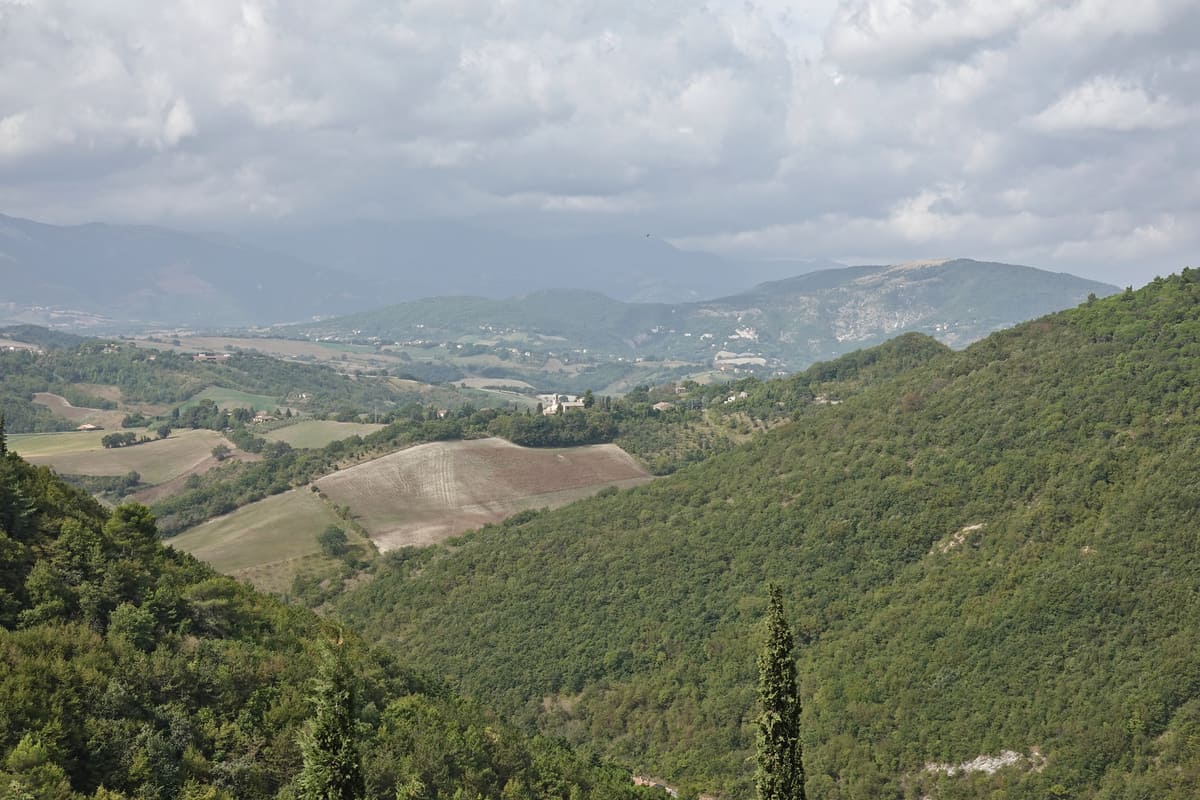
You can find a description of the objects to be visited under this link or on the map below in the text:
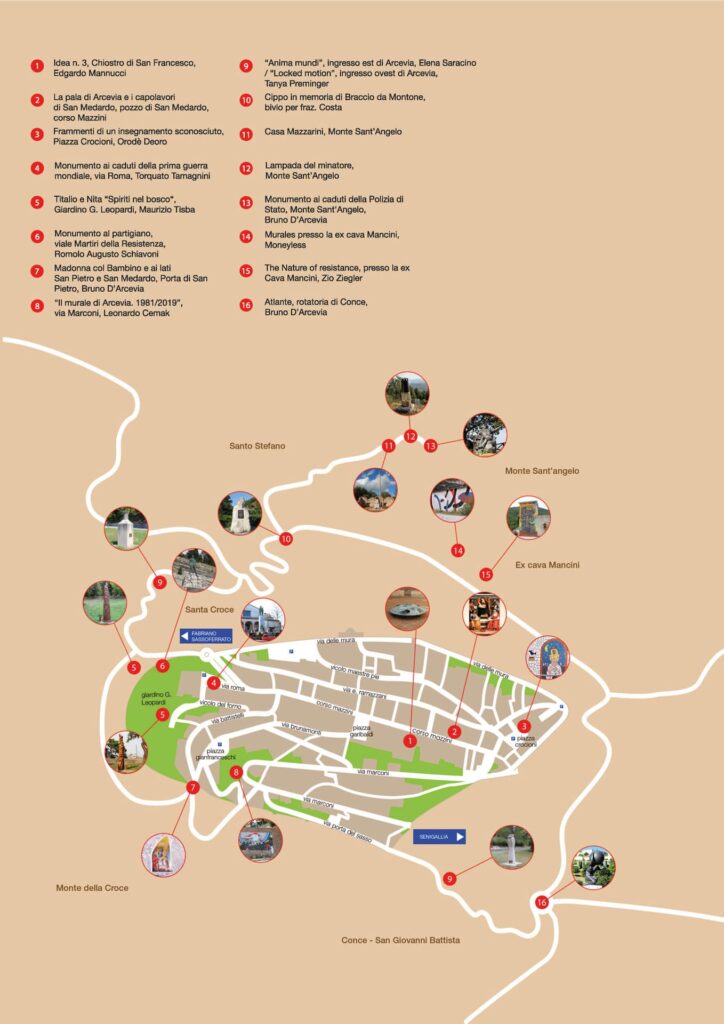
To find the objects on the route, you can consult this map created by Isabelle: She started by car at the roundabout (number 16 on the map). Here are the coordinates of the starting point.
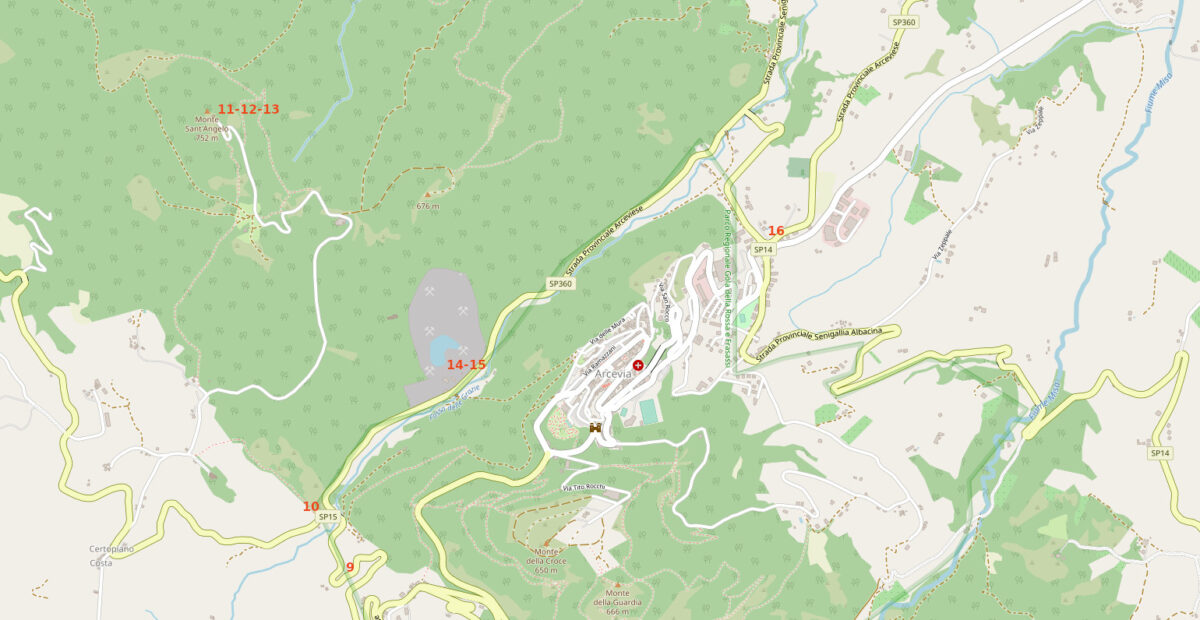
Number 16 – Atlas of Bruno d’Arcevia
In the center of this roundabout there is the first object: the sculpture Atlas carrying the globe on his back. It was created in 1988 by the Marchigian artist Bruno d’Arcevia, the pseudonym of Bruno Bruni. You can find one of his works also in the cloister at Santa Lucia in Serra San Quirico.

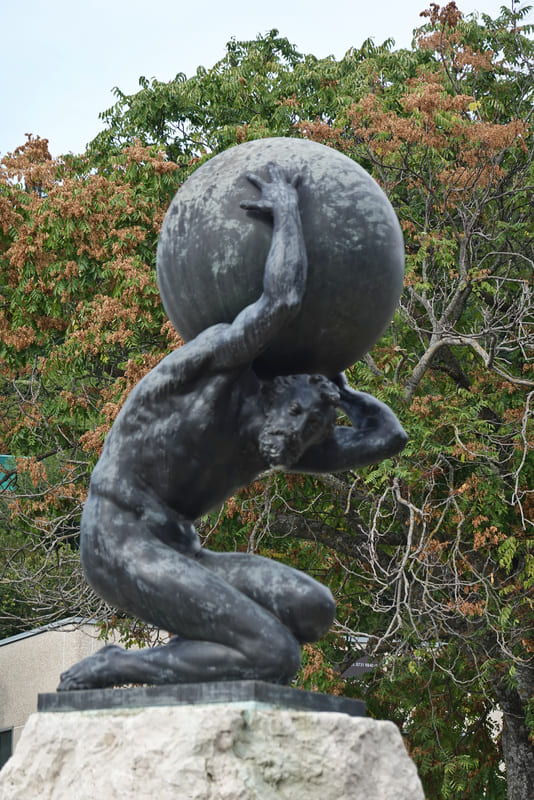
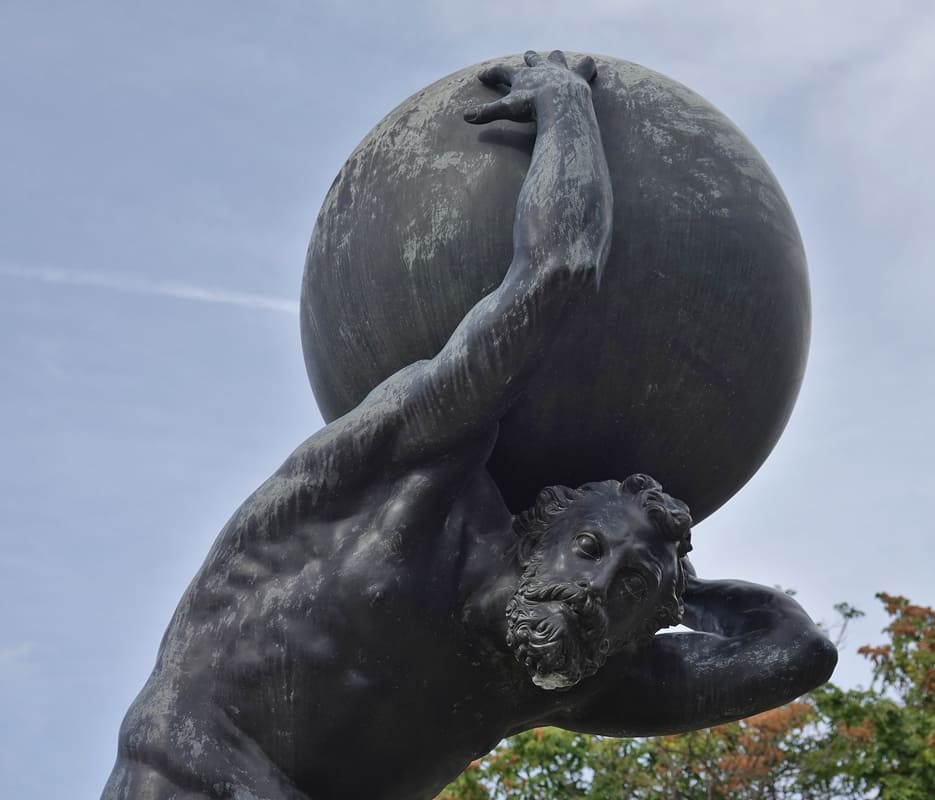
Number 15 – The Nature of Resistance of Zio Ziegler
From here our tour takes us to the Strada Provinciale Arceviese, passing the former Mancini quarry. Here we can admire the wall painting by Zio Ziegler: The Nature of Resistance.
The Californian street artist created his first work of art in Italy in 2015. The Nature of Resistance refers to the partisans who were executed in this area during World War II. For him, the quarry also represents resistance against nature.
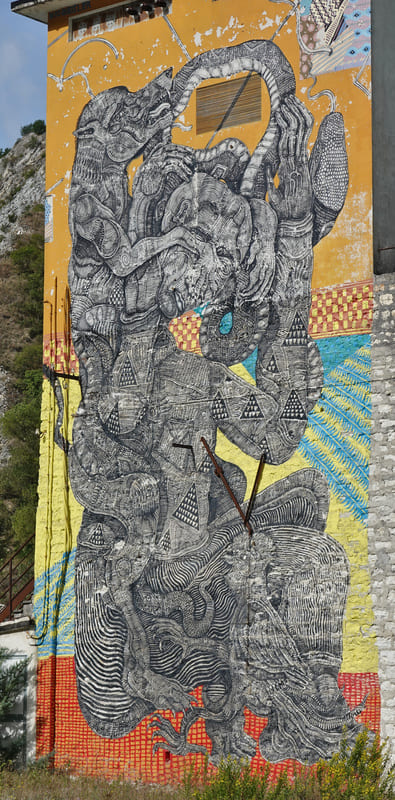
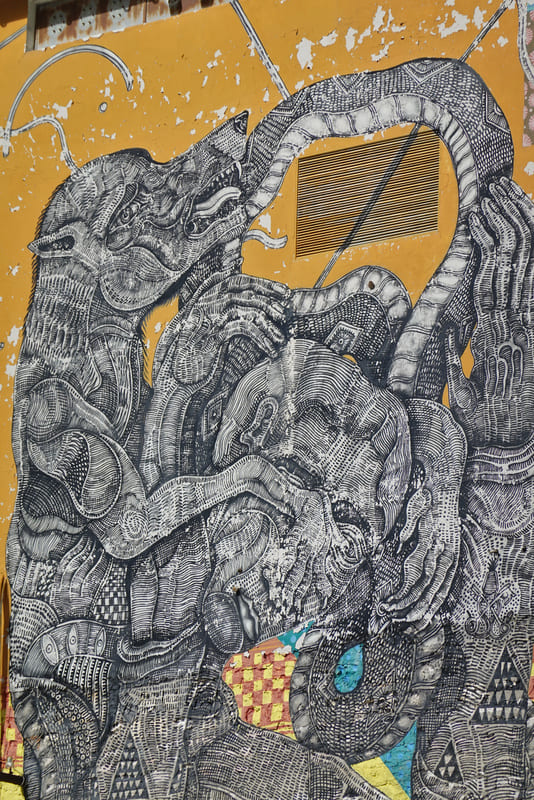
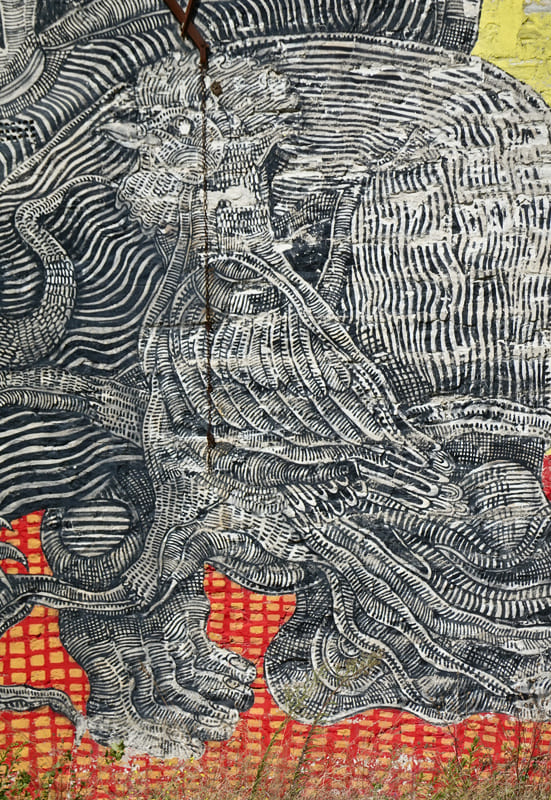

Number 14 – Moneyless
A little further on, the mural by the next artist, Moneyless, appears, but Isabelle was only able to partially photograph it from the street.
Number 11 – Monument Casa Mazzini
We continue: In Certopiano we turn towards Monte Sant’Angelo. In a previous article we reported about the Church of St. Michael on Monte Sant’Angelo. On the way to the church we pass station number 11. During the Second World War, on May 4, 1944, the Nazis shot some members of the Mazzini family here along with the partisans who hid them in their house. The wall of the Mazzini family house is now a monument intended to commemorate these atrocities of the German occupation.

Number 12 – Miners’ Lamp from Cabernardi
Finally we reach the church of St. Michael: Here there is a miner’s lamp, which since 2017 has been a reminder of the Cabernardi sulfur mine, which is 6 kilometers as the crow flies from Arcevia.
Number 13 – Monument to the fallen soldiers of the State Police
A little further you can see the monument, which was also created by Bruno d’Arcevia for the fallen soldiers of the state police.

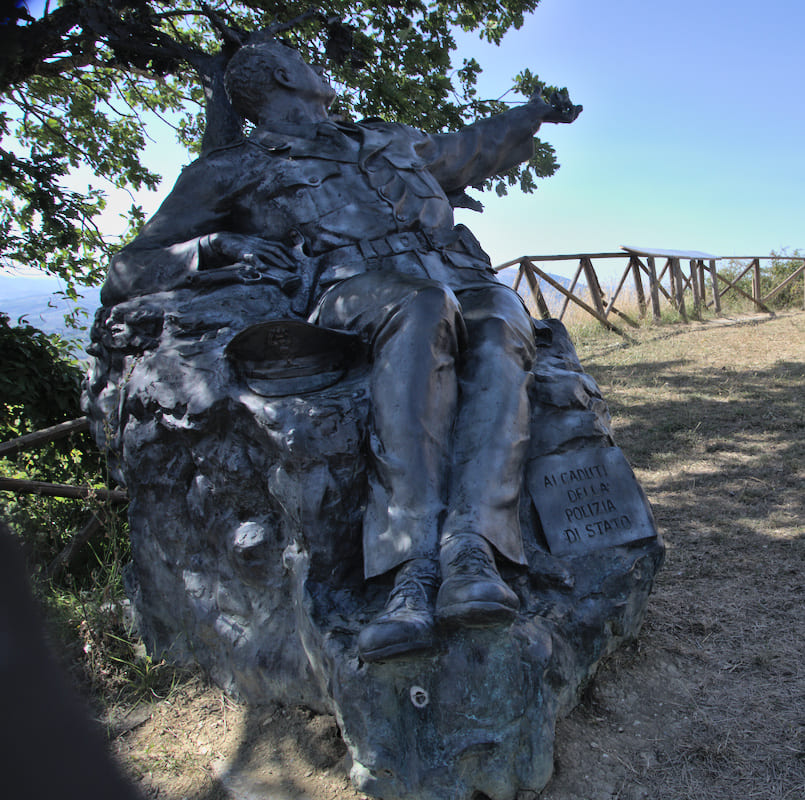
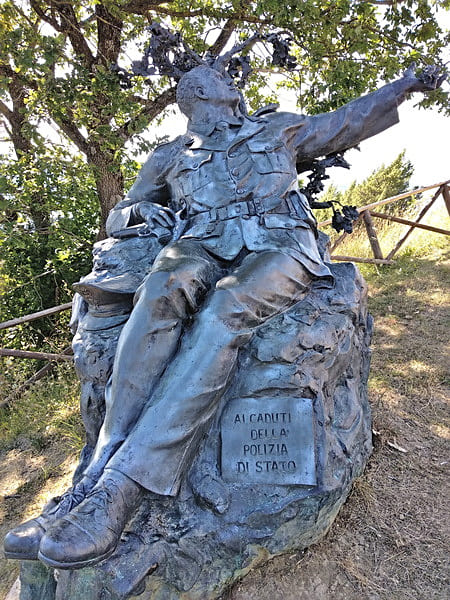
Number 10 – Monument Braccio di Montone
We now drive down the hill of Monte Sant’Angelo the same way we came. At the intersection with the SP10 and the Via Costa we see the monument number 10: on the plaque we can read that the adventurer Braccio Fortebraccio dei Conti di Montone in 1407 funded Rocca Contrada (the former name of Arcevia) that brought the victory over the Pergolese.
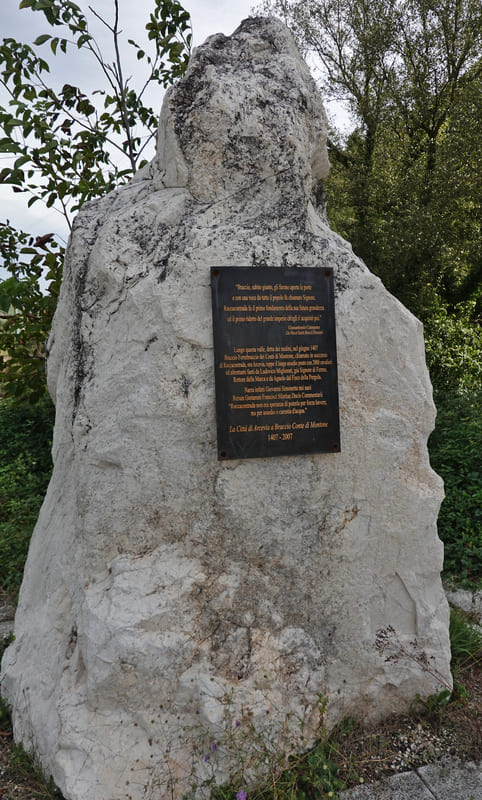
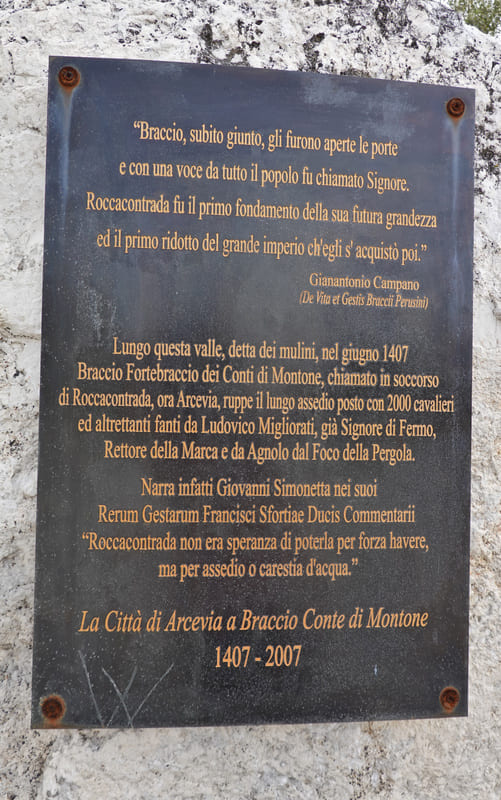
Number 9 – Anima Mundi
Now we head towards Arcevia town. There we are greeted by artwork number 9, Anima Mundi, created by the artist Elena Saracino.
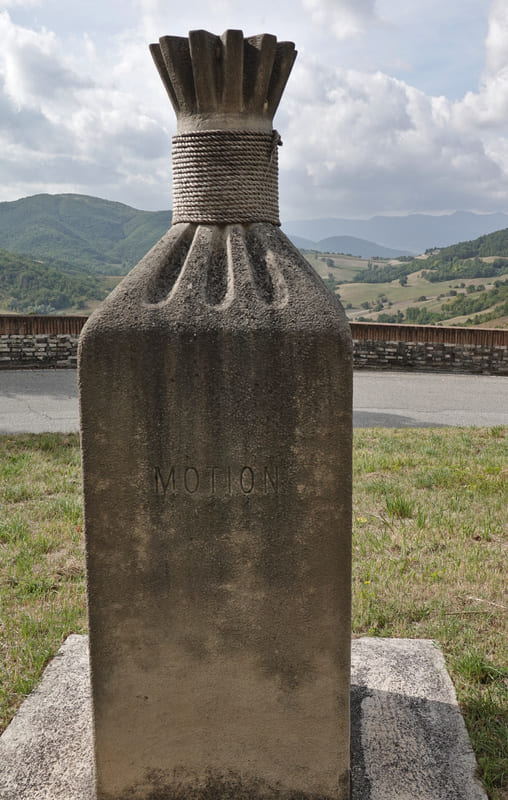
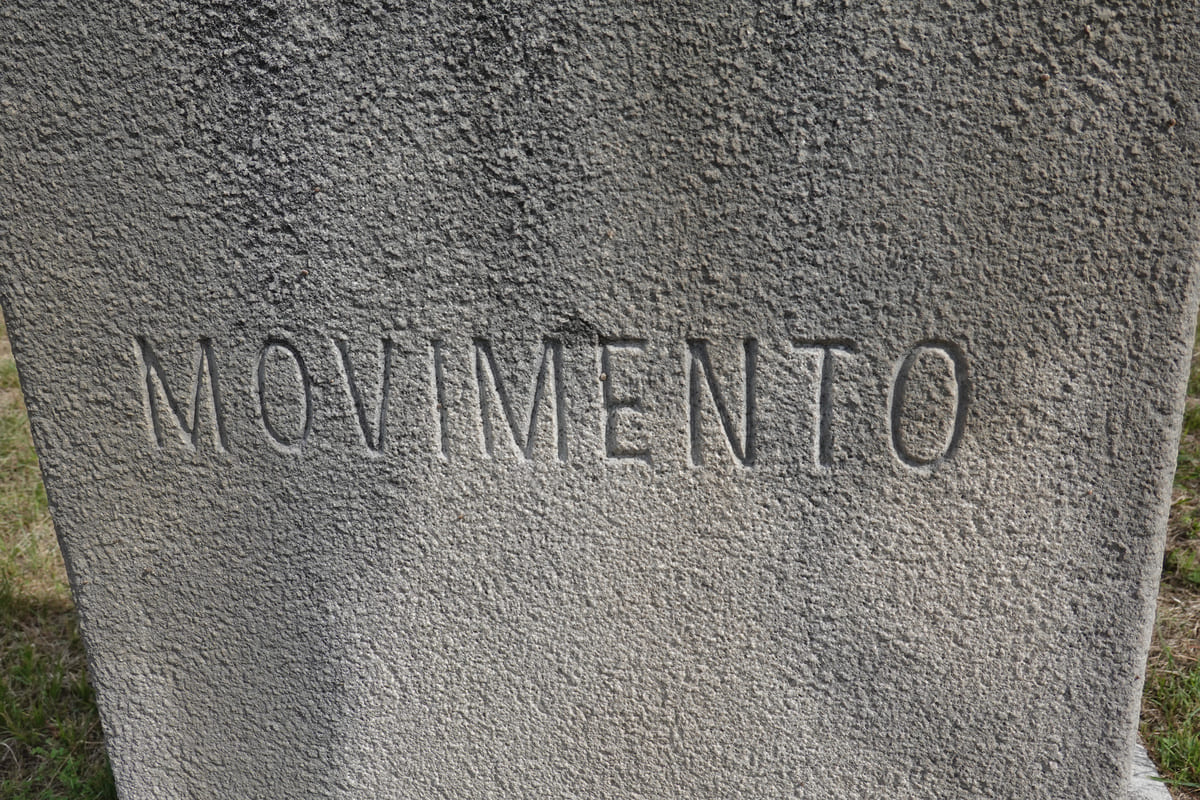
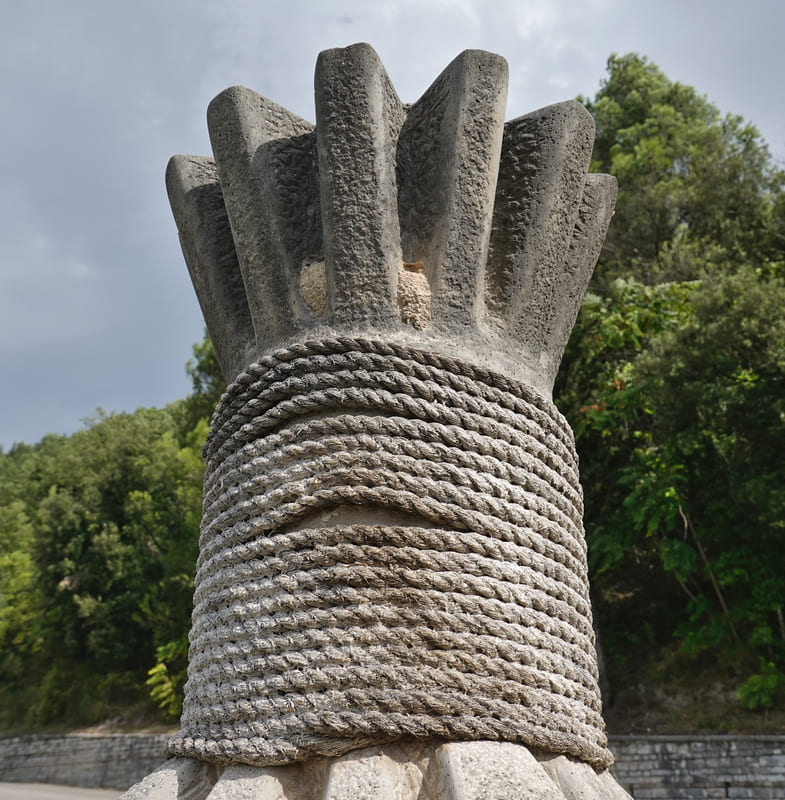
The administration of the Parco Gola della Rossa e di Frasassi Natural Park has also set up a board here, because from here there is a wonderful panoramic view of the park.
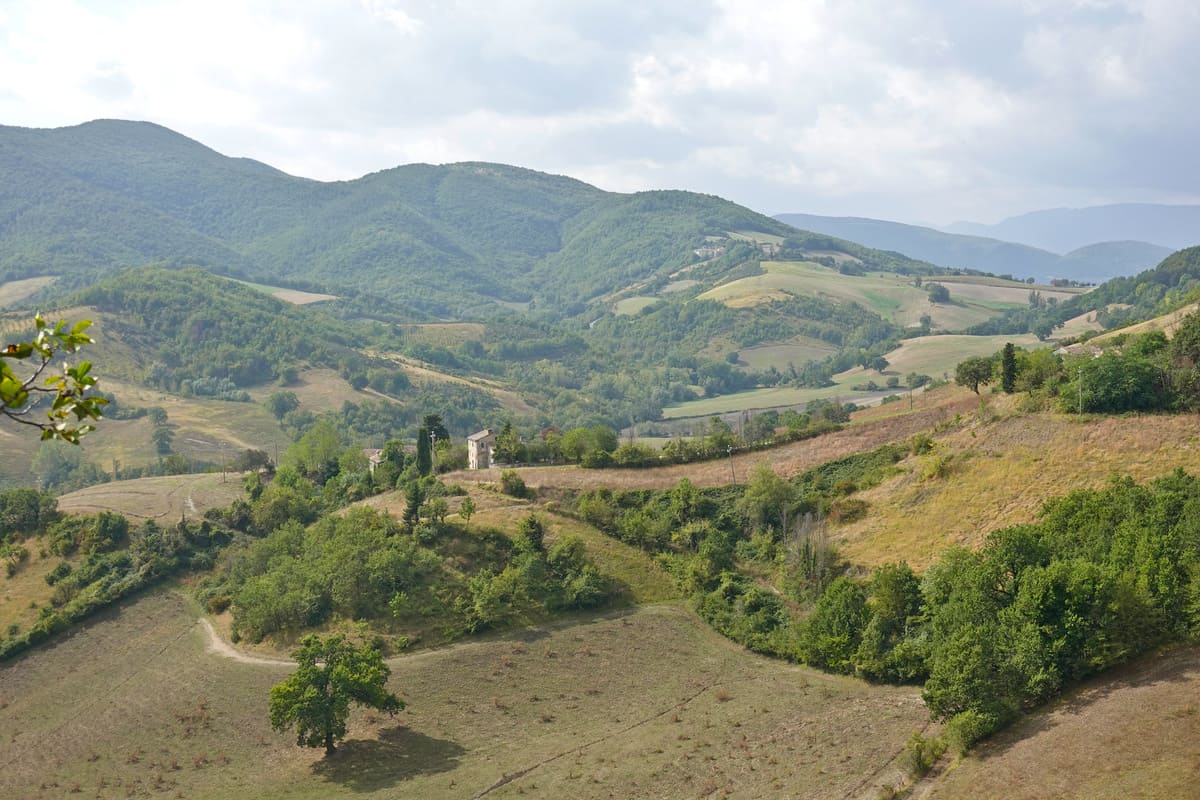
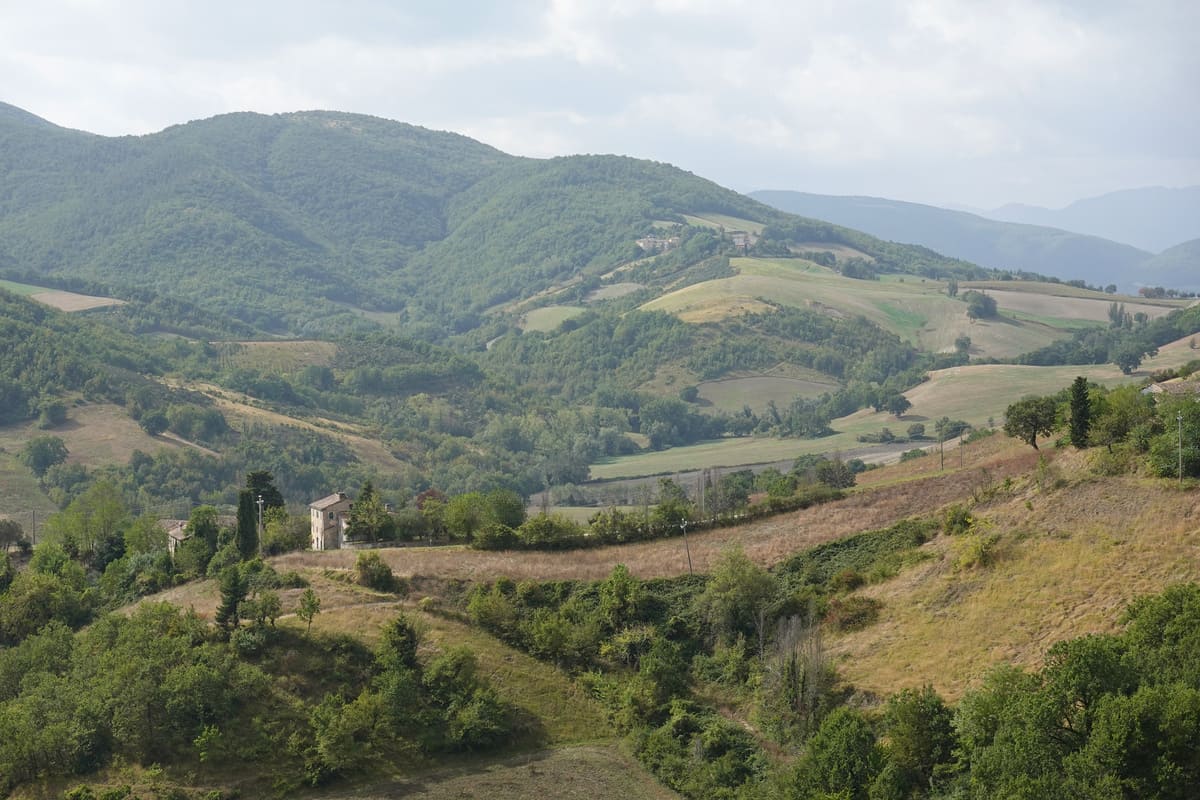
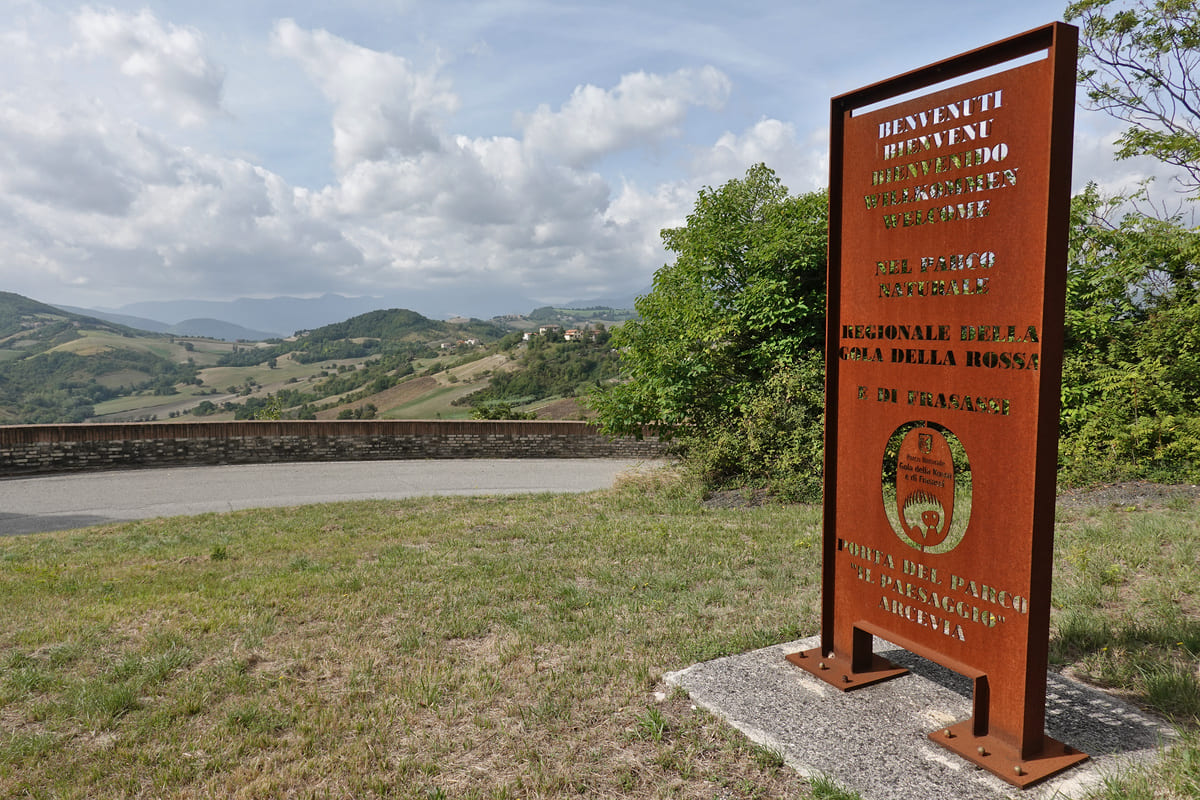

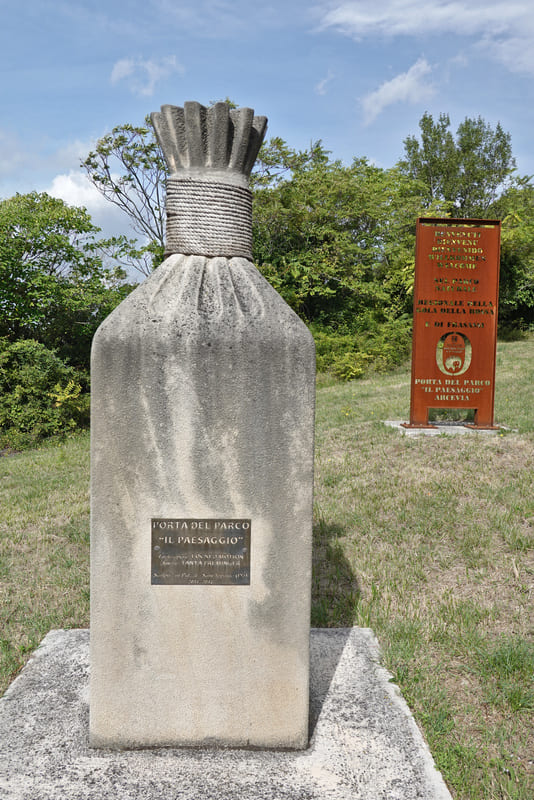

You can see the other objects (numbers 1 to 8) within the old town of Arcevia on this map here:
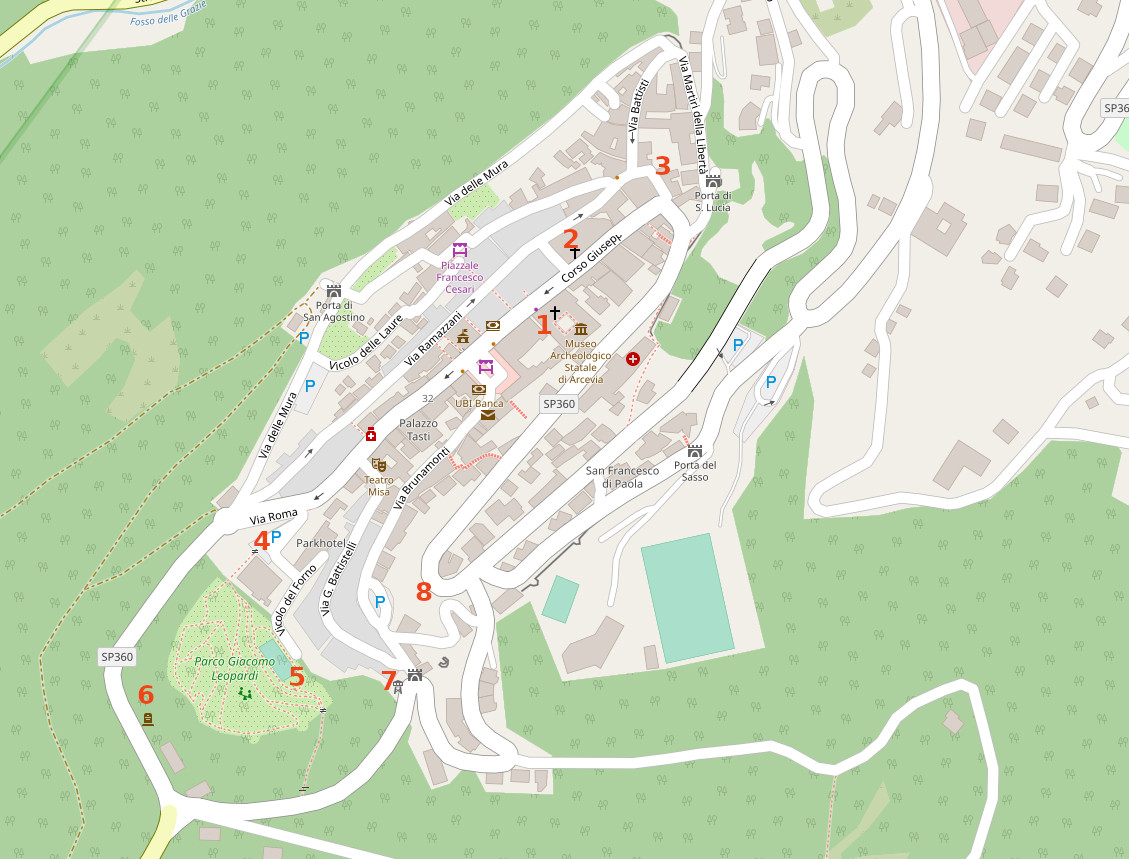
Number 6 – Partisan monument von Augusto Schiavoni
We park on the outskirts of the town at the partisan monument: Romolo Augusto Schiavoni created it in 1964 and placed it in the direction of Monte Sant’Angelo, i.e. in the direction of the monument where the resistance fighters marched. Schiavoni created several monuments in honor of the war victims in the Marche, including in Fabriano, Osimo and Senigallia.
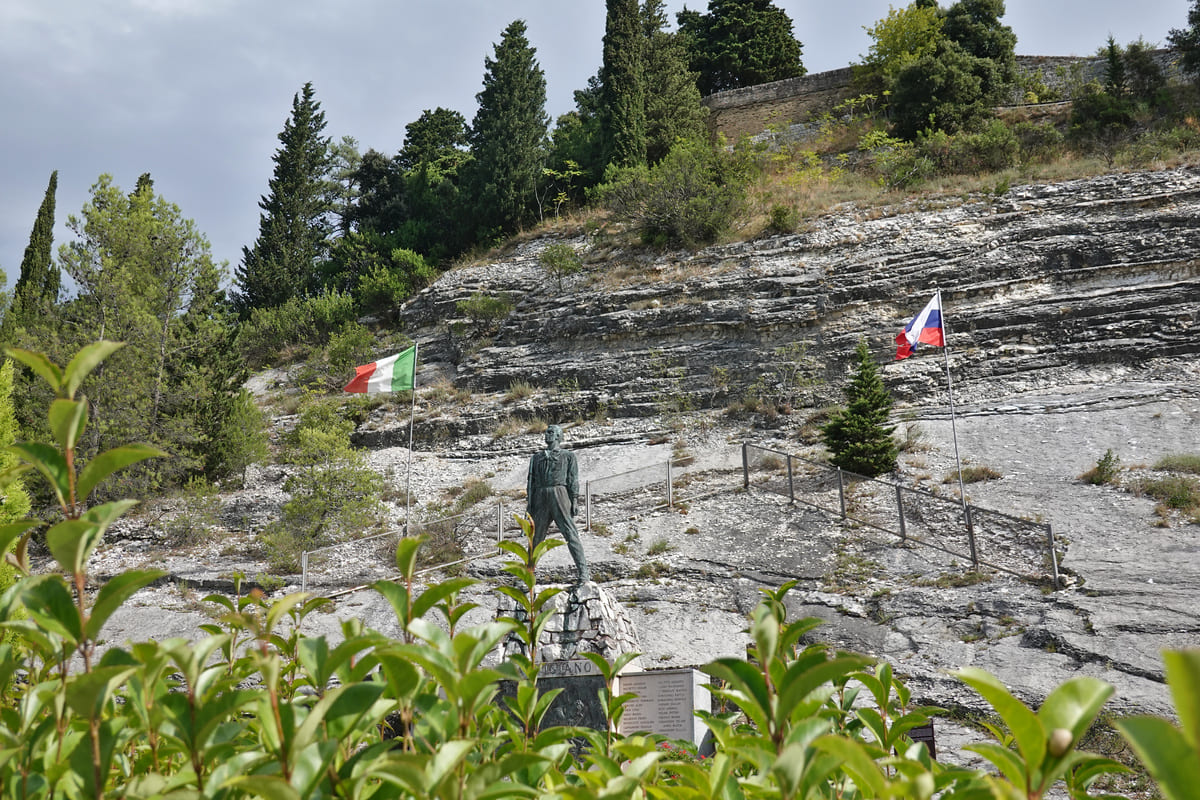

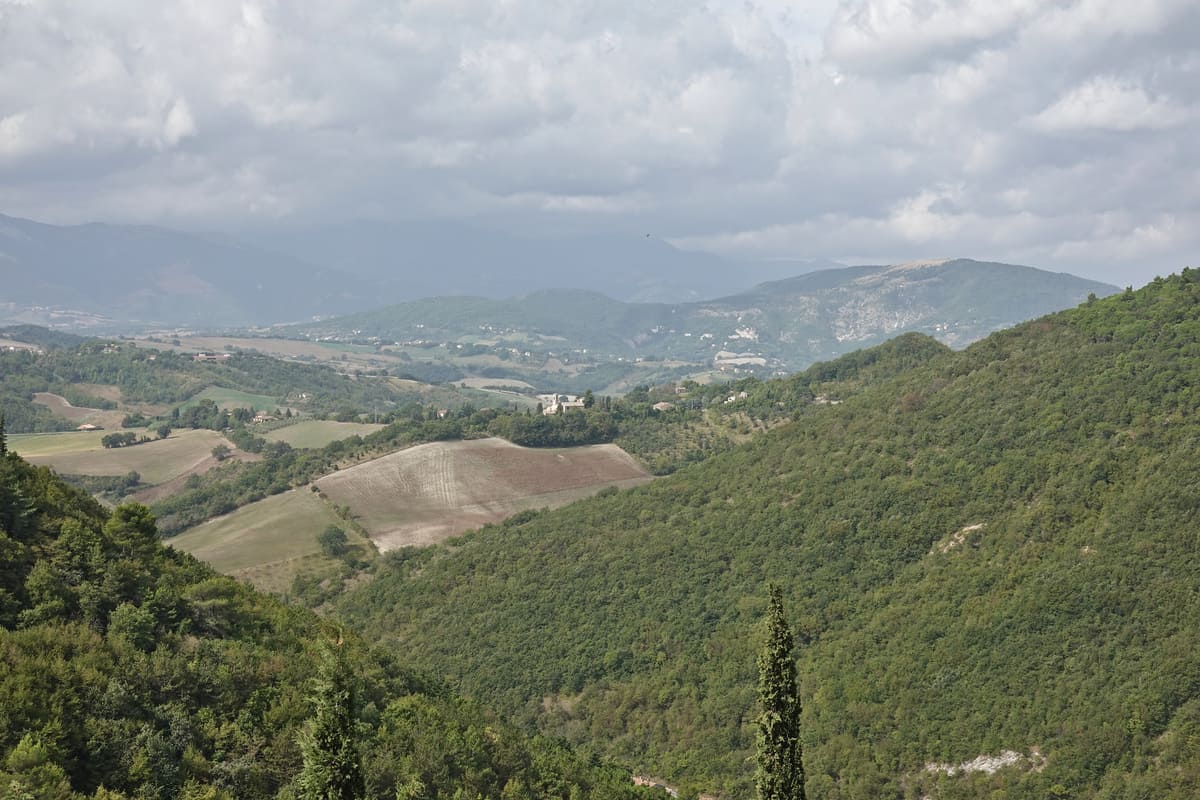
Number 4 – Memorial for those who fell in the First World War
From here we continue on foot: we enter the city center and reach the Leopardi Park. At its entrance is object number 4: the Monument to the Fallen of the First World War, created by Torquato Tamagnini in 1923.
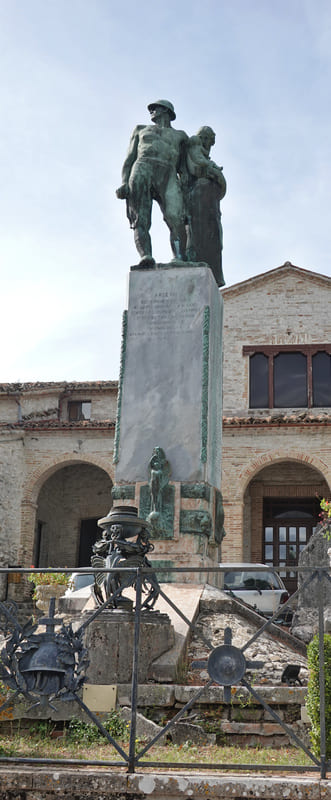

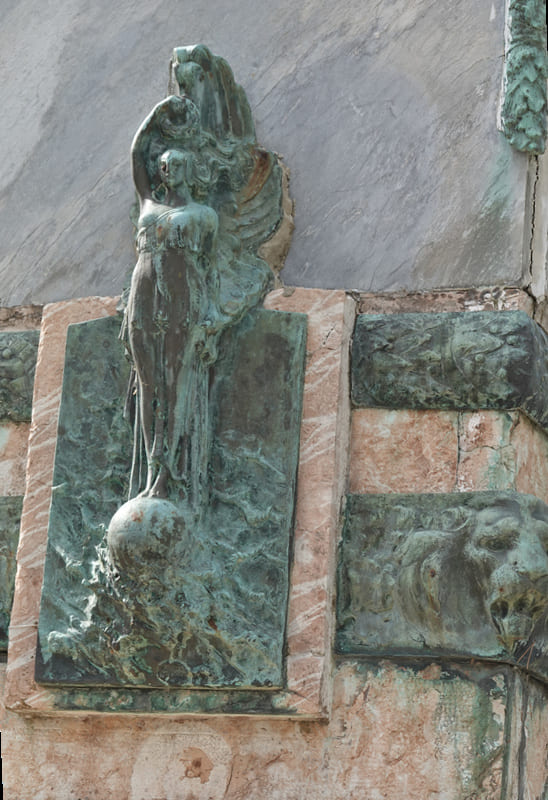
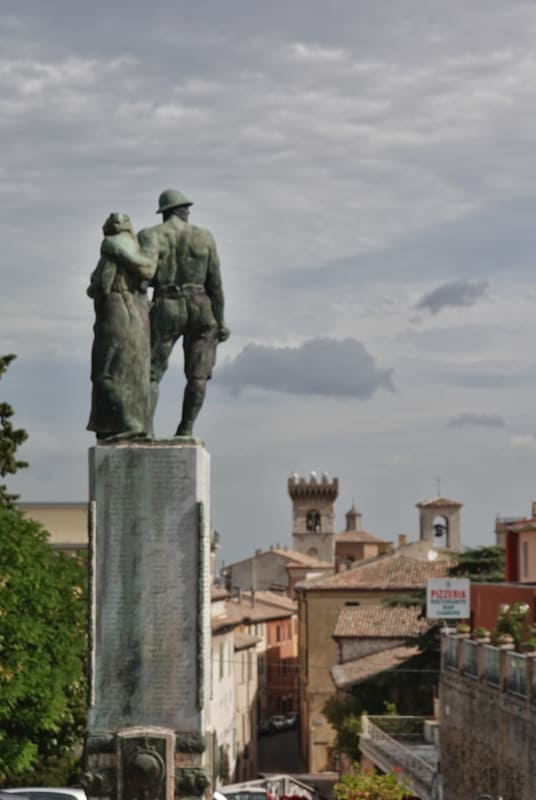
The park is the ideal place for a walk in the shade and refreshment in summer. However, the bar seems to be closed outside of the season.
Number 5 – Spiriti nel Bosco of Maurizio Tisba
We have to look for a while to discover the number 5, but we find it down by the sports field: a wooden sculpture erected in 2017 by Maurizio Tisba: Spiriti nel bosco (forest spirits).

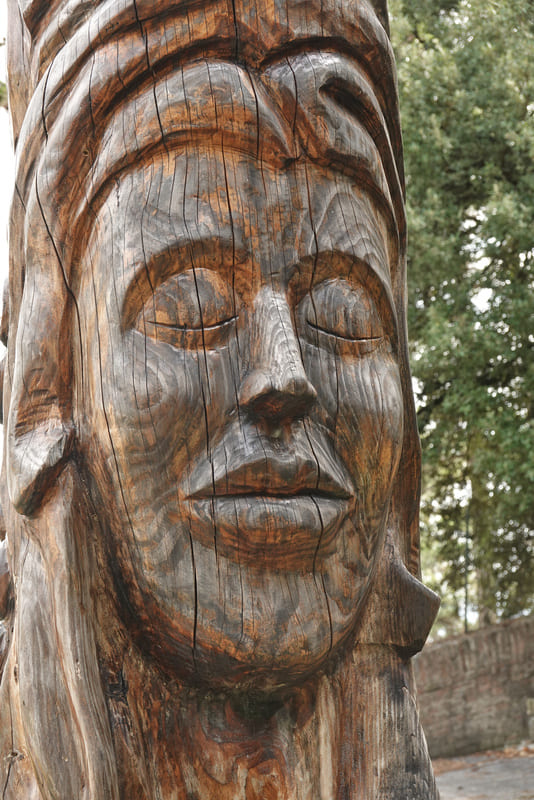

We are now standing at the highest point of Arcevia and enjoying the view.
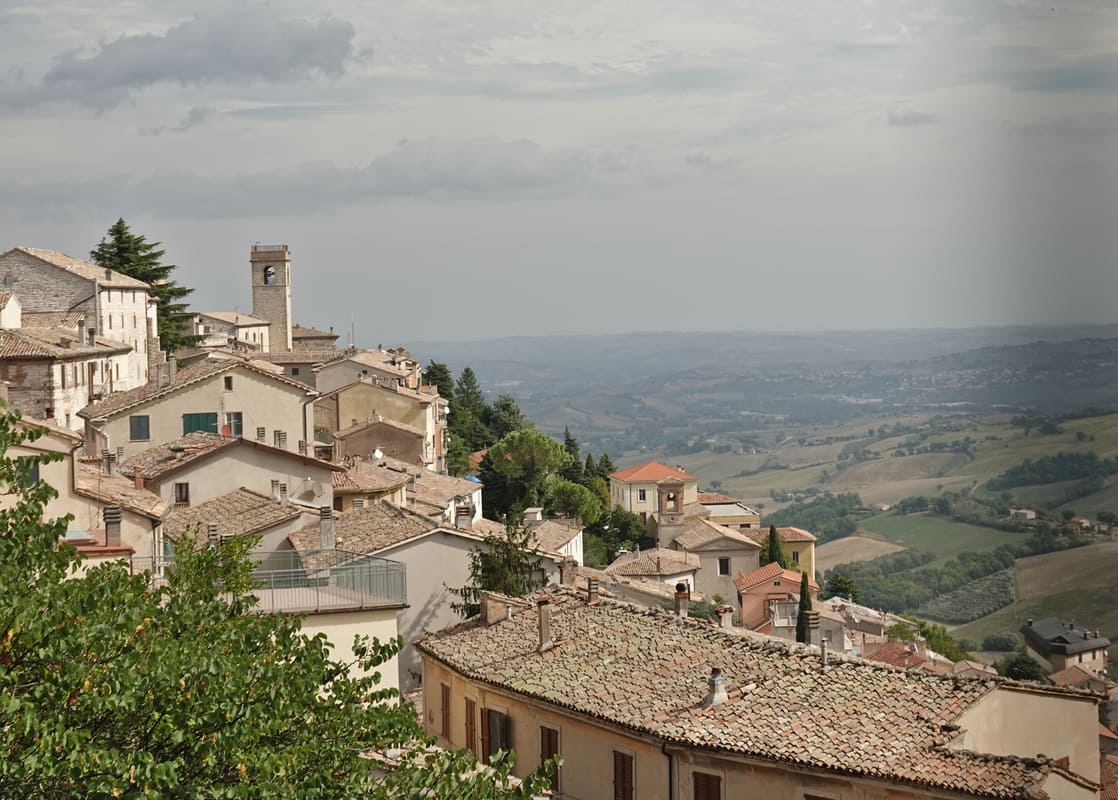
Now we stroll through the streets to Porta San Pietro.
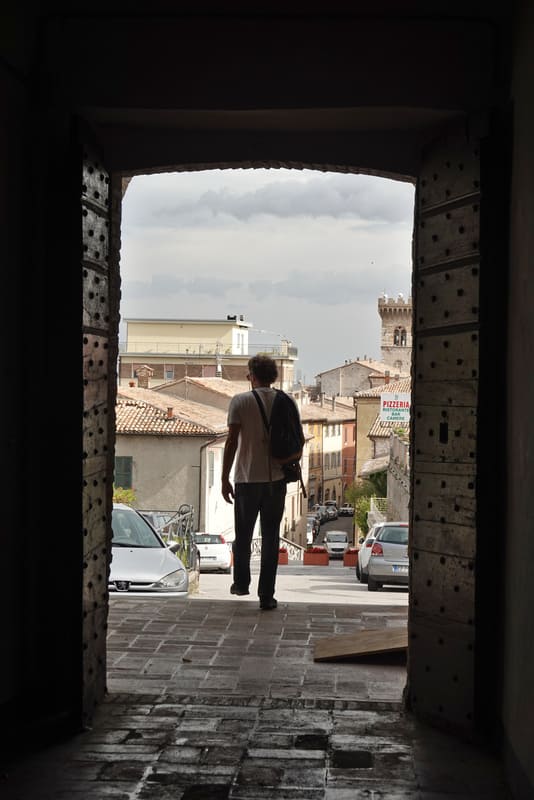
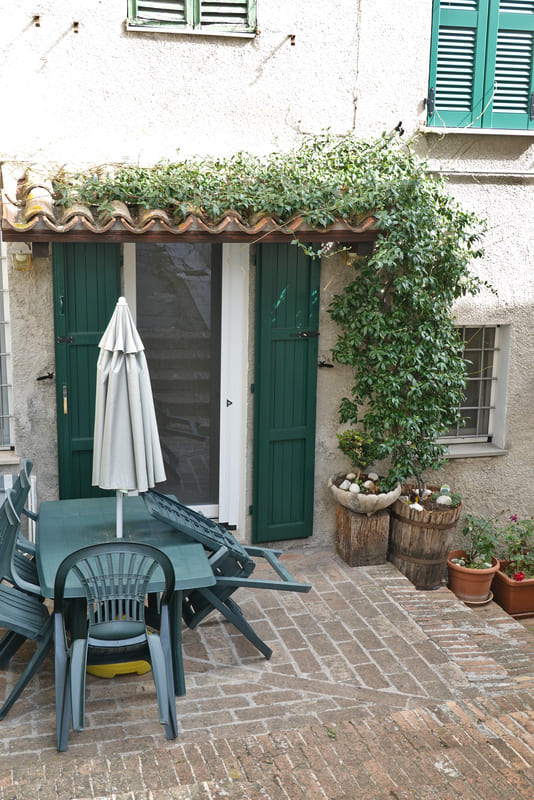

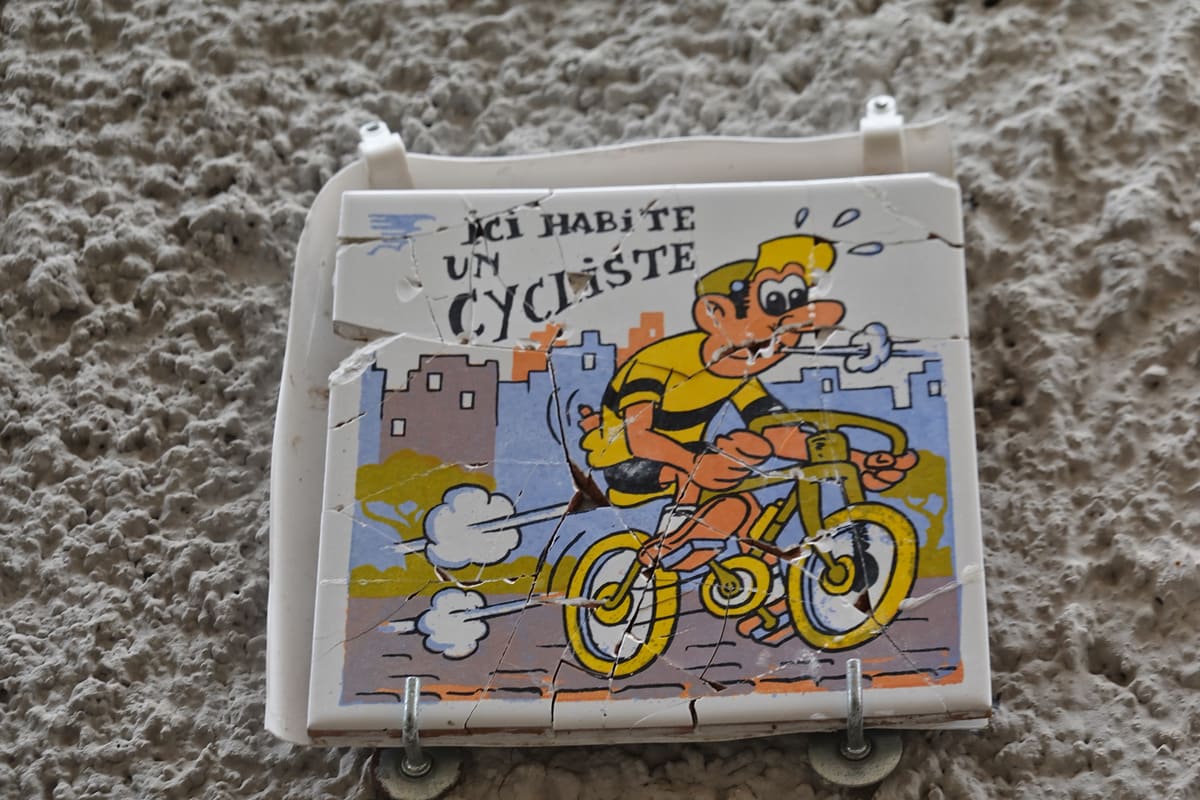
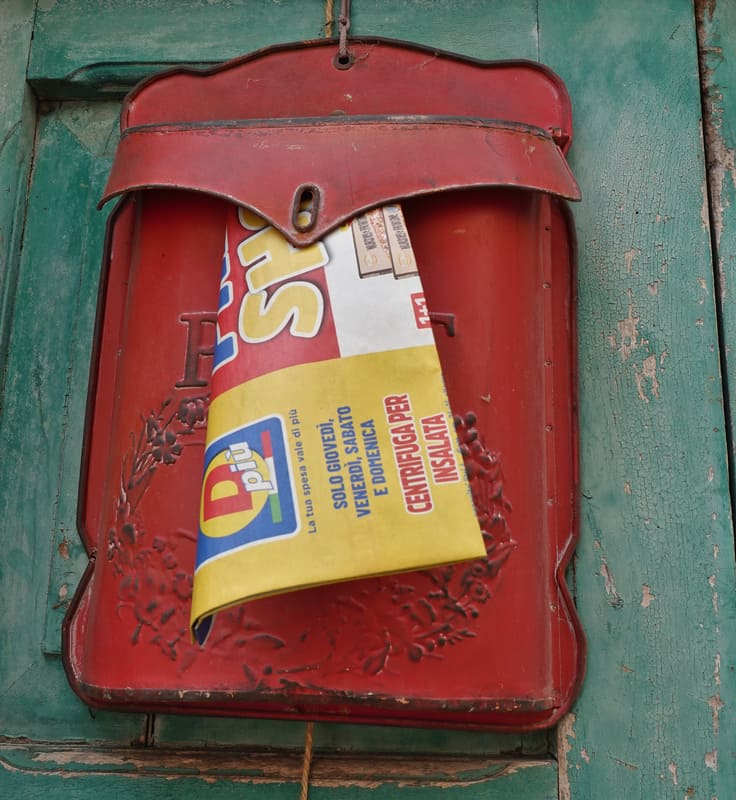
Number 7 – Madonna con il Bambino of Bruno d’Arcevia
We notice the number 7 on the inside of the city gate. This time it is a painting by the artist Bruno d’Arcevia from 2009: the Madonna con il Bambino with San Pietro and San Medardo on either side.
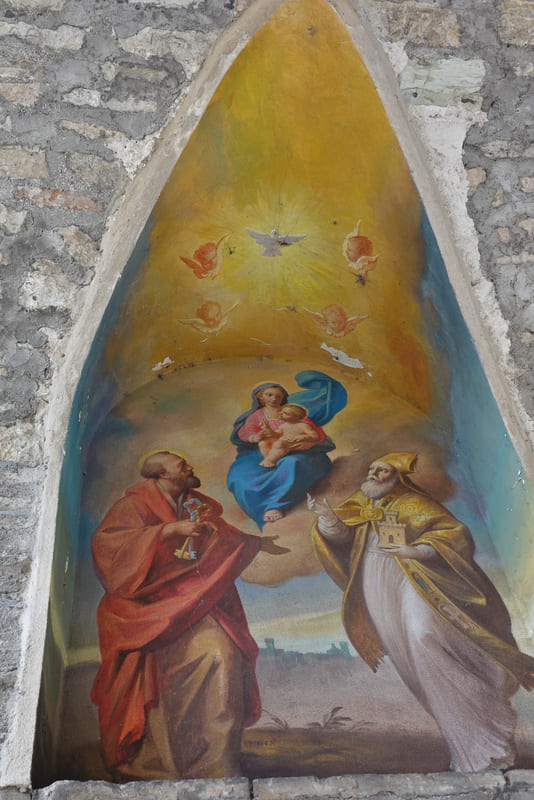
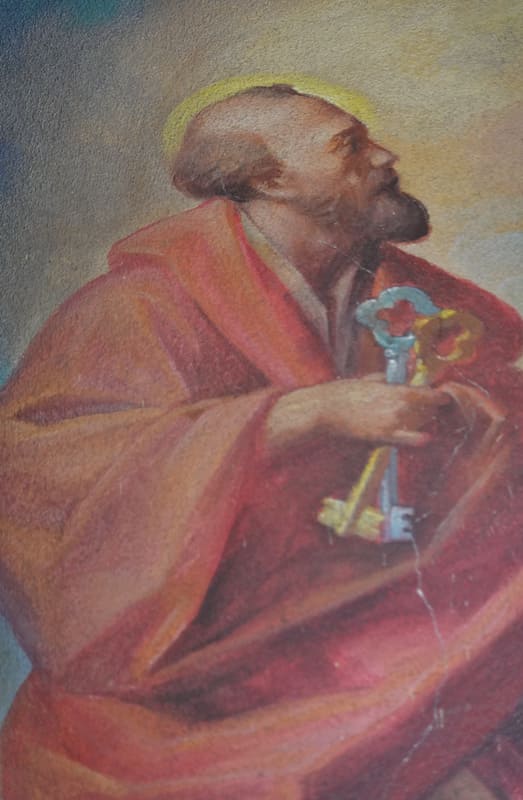

Saint Peter can be clearly recognized by the keys of the Kingdom of God.
Number 8 – Murales de Arcevia
Along the provincial road, a very large mural appears on the left, the Murales de Arcevia. In 1981, Aurelo Ceccarelli created a huge mural at this location, but it was destroyed by storms in 1981. In 2019 (Aurelio died in 2014), another artist, Leonardo Cemak, created the current artwork based on the earlier one.
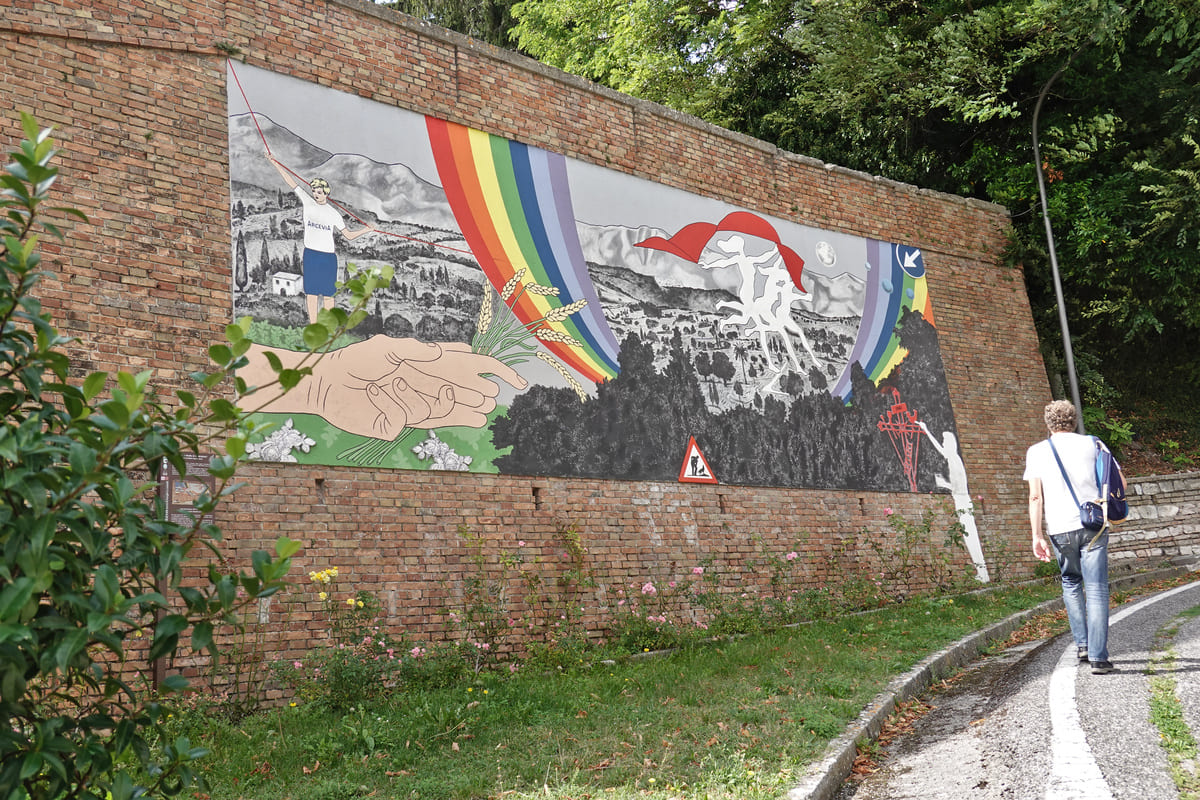
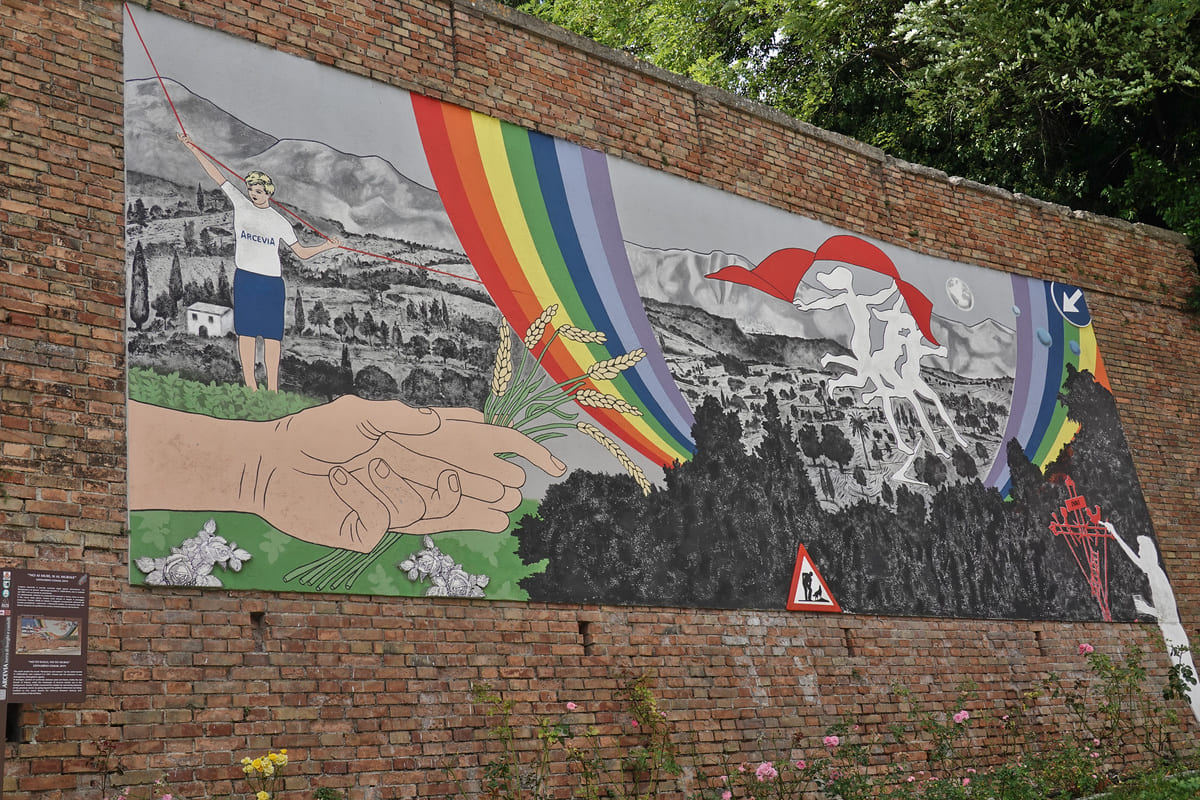
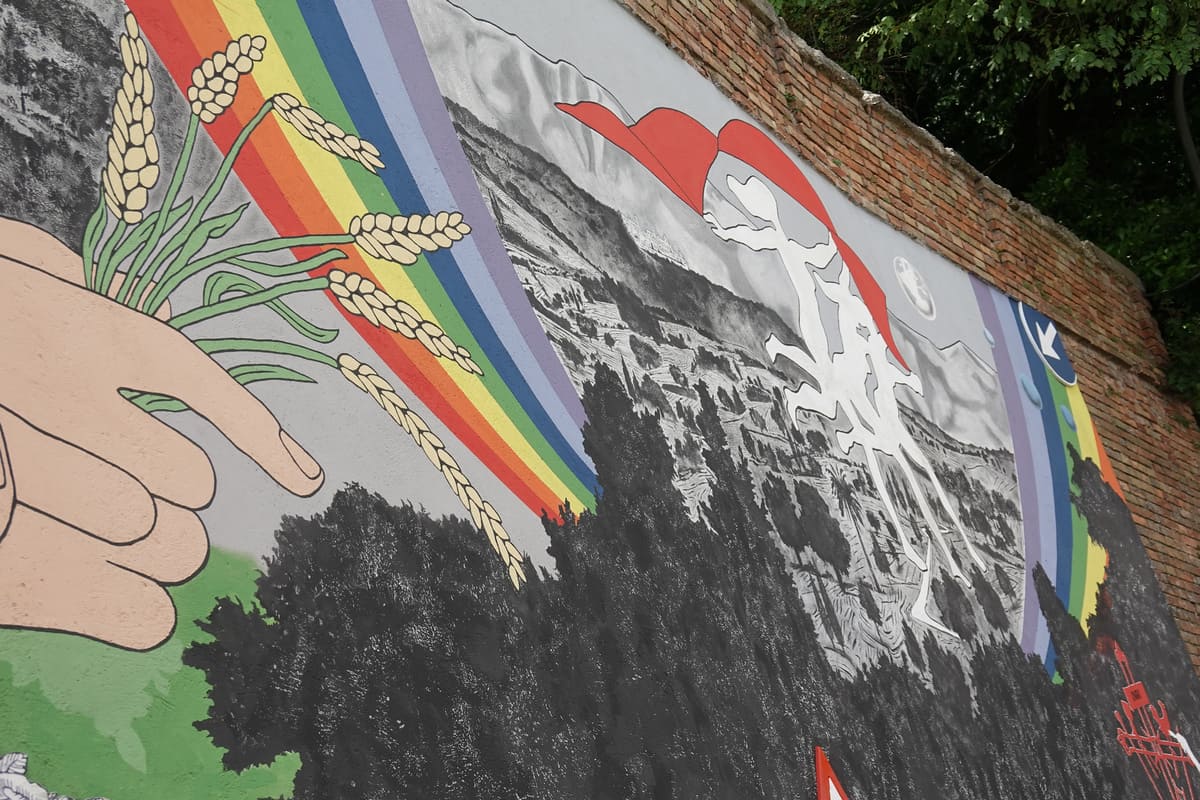

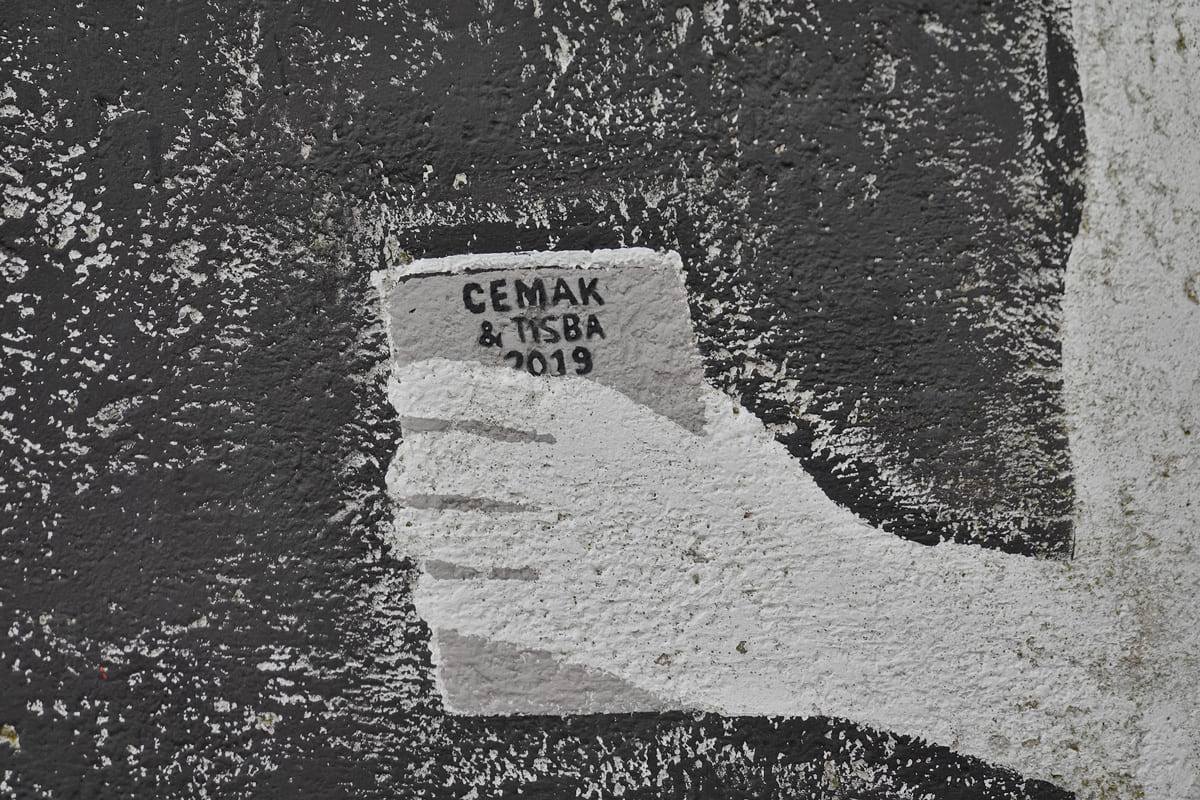
Now let’s go to Corso Mazzini, the center of Arcevia, because this is where the numbers 1 and 2 are.
Number 2 – Medard fountain with altar sculpture
At the back of the Medard Fountain we see a copy of the altar sculpture of the Madonna and Saints. The original artwork, painted by Luca Signorelli in 1508, is located in the Pinacoteca of Brera in Milan. In 2009 the painting temporarily returned to Arcevia and a copy still commemorates this event today.
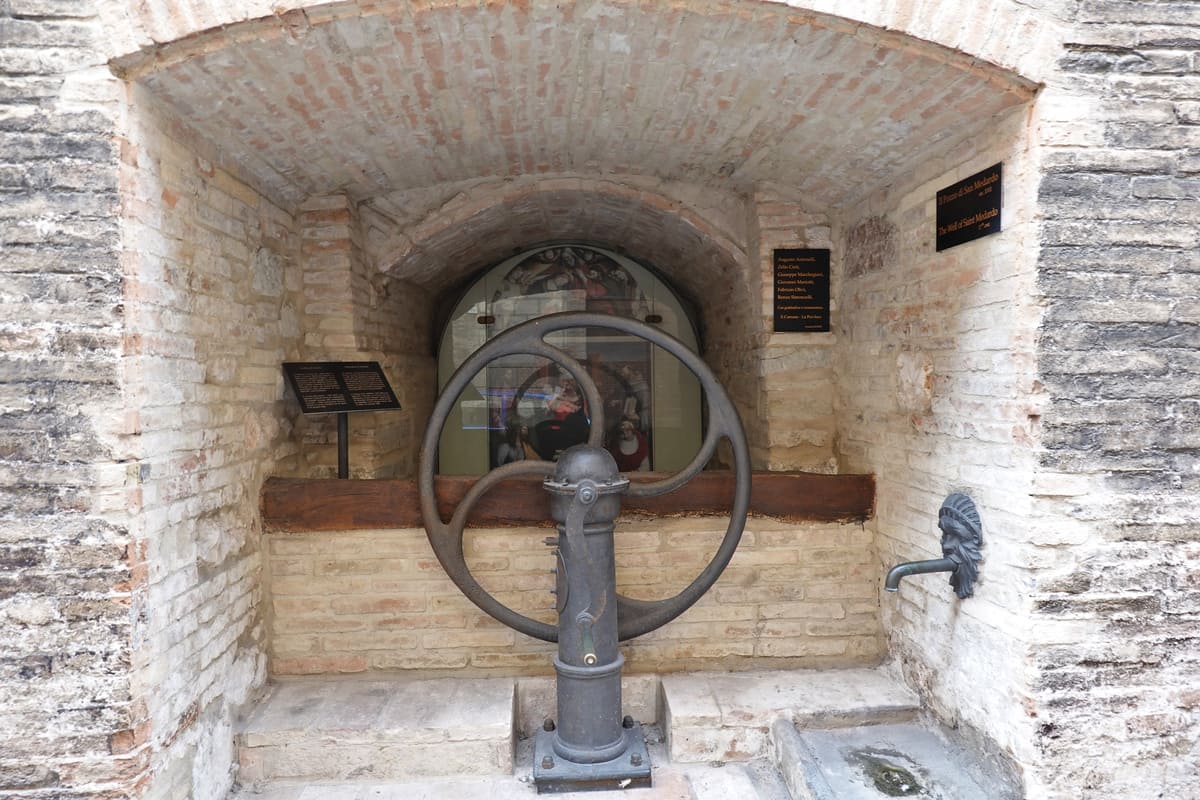

Number 1 – Bronze sculpture Idea N.3
We don’t have to look long for number 1, because here we enter the cloister of Saint Francis. Edgardo Mannucci created the bronze sculpture Idea No.3 in 1972.


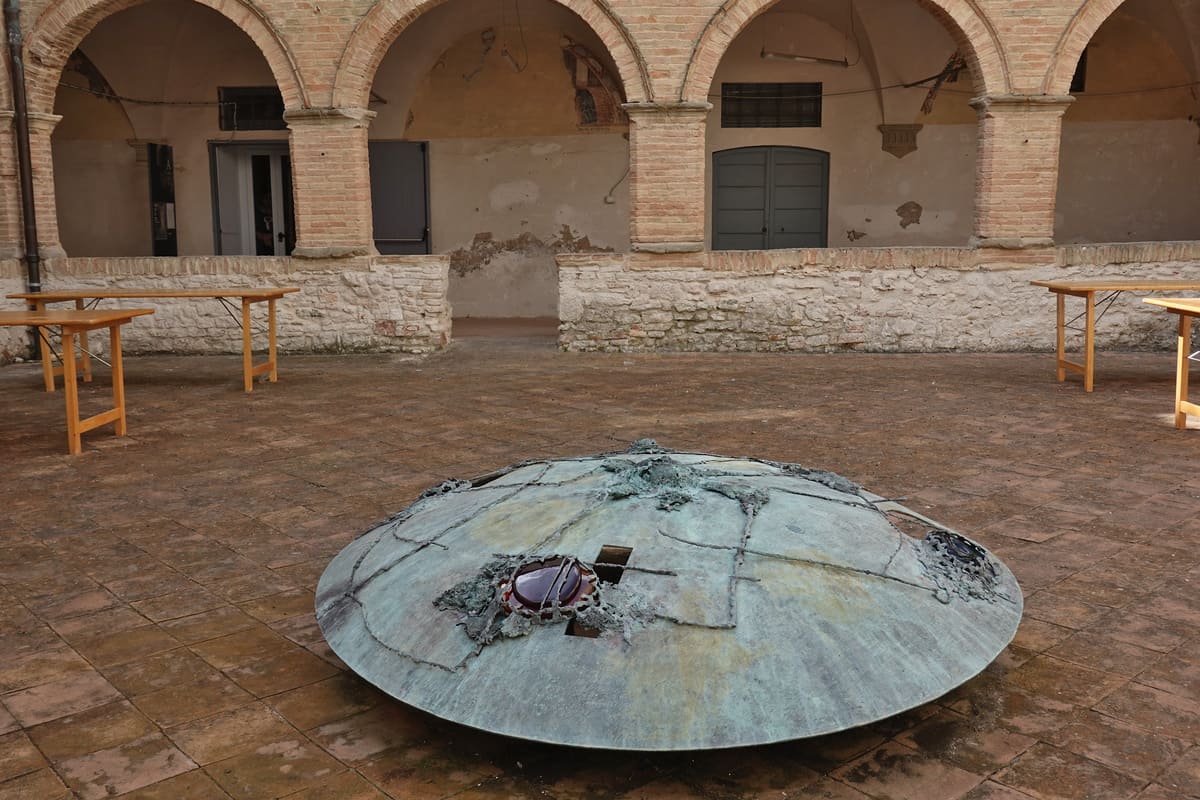
Number 3 – Mosaic Frammenti di un insegnamento sconosciuto
At the very end of Corso Mazzini and Via Ramazzini is the last object on the wall of a school institute in Piazza Crocioni: Frammenti di un insegnamento sconosciuto. (Fragments of an unknown teaching). It took the artist Orodè Deoro 3 years, from 2008 to 2011, to create this mosaic. Unfortunately, Isabelle is here on the eve of the wine festival; there are a lot of tents and stalls, so she can’t photograph the mosaic very well.
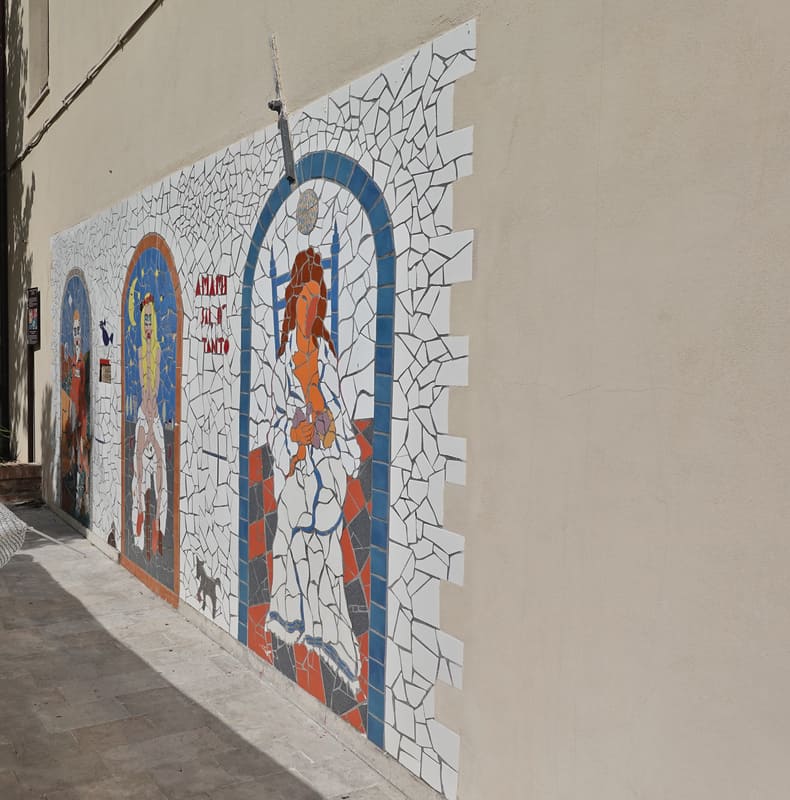

This ends our round. Isabelle liked some works very much, others less so. But that is probably a matter of taste.
If you’ve been following the objects carefully, you’ll have noticed that one object is missing from Isabelle’s list. Which? That’s right, at number 9 there are 2 objects, of which she only photographed one. If you stop by there, send us a photo of the 2nd object, Locked Motion, by Tanya Preminger.
But definitely an exciting and entertaining way to discover Arcevia!
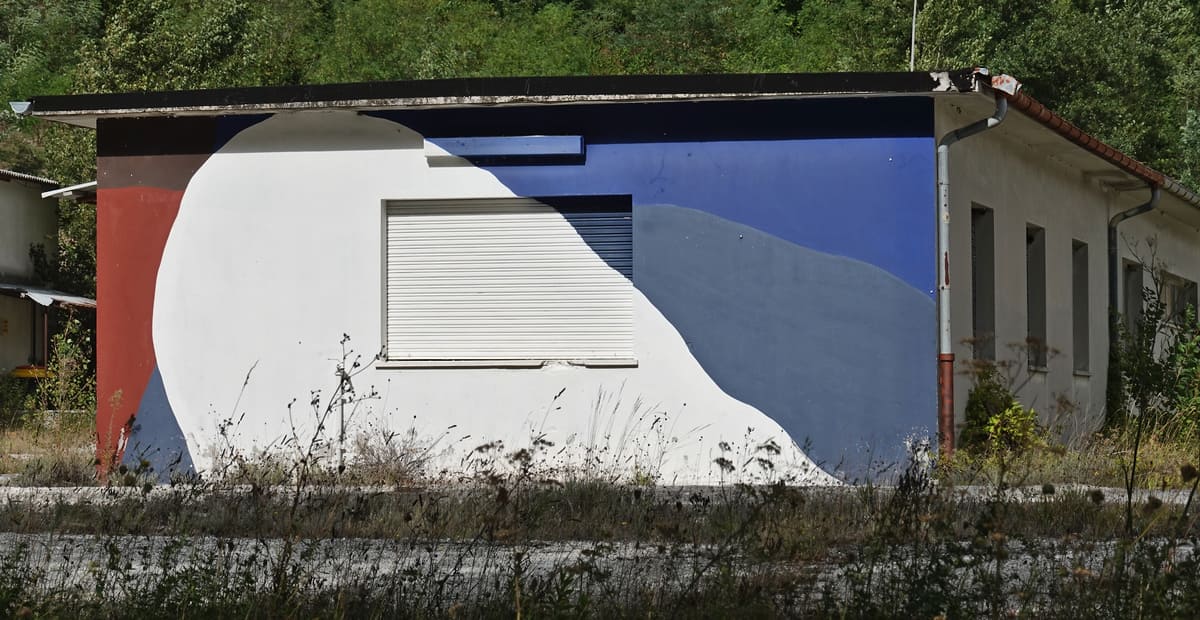
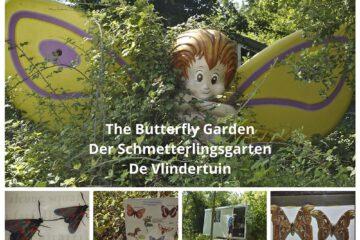

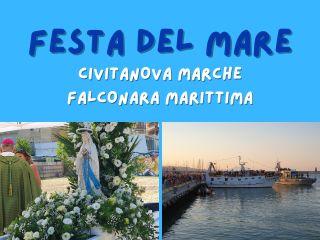
0 Comments